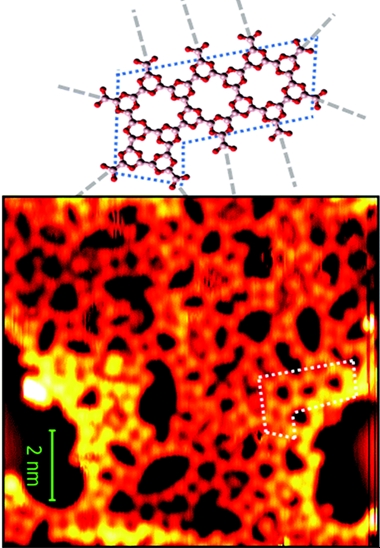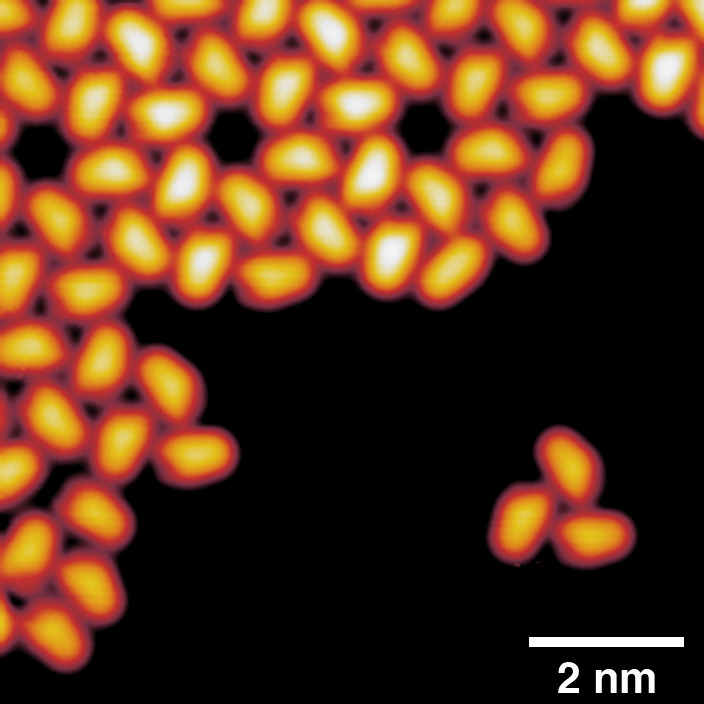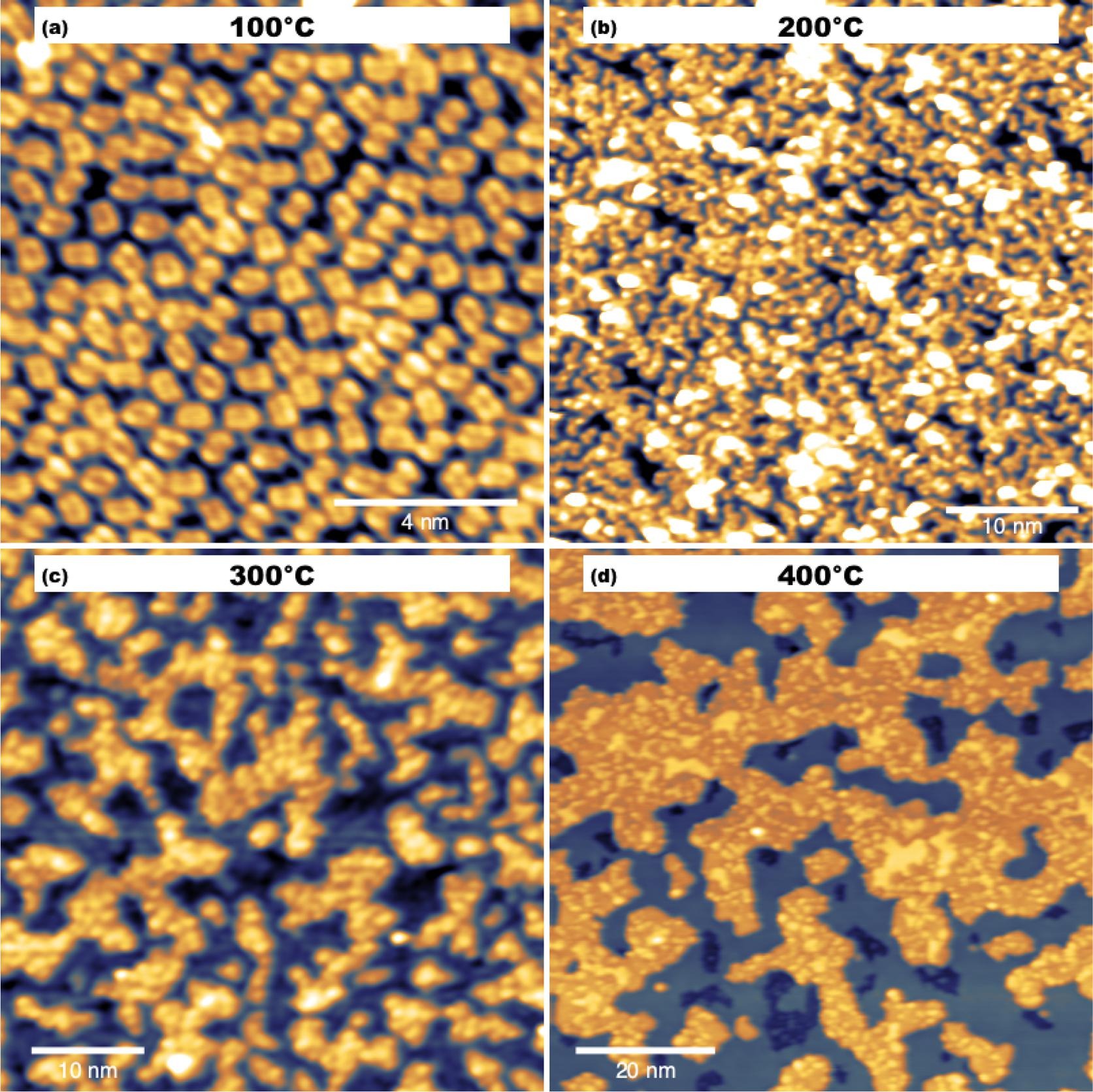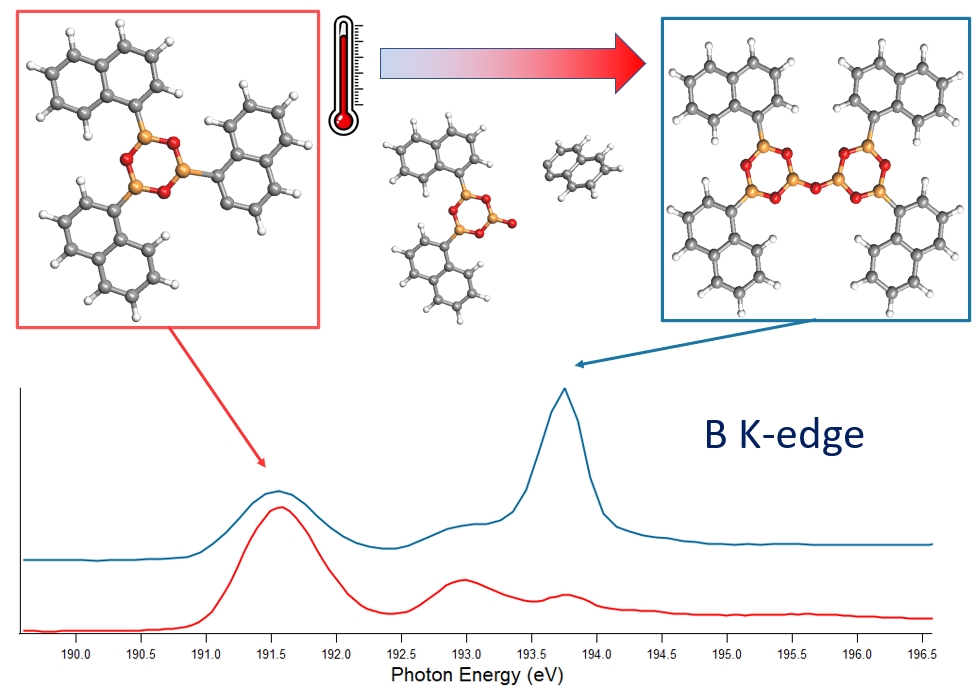On-surface synthesis of a 2D boroxine framework

 Our research focuses on on-surface synthesis as a
powerful bottom-up approach for fabricating atomically precise
nanostructures with tailored electronic and chemical properties. By leveraging metallic surfaces as catalytic platforms,
we explore reaction mechanisms that enable the controlled formation of low-dimensional materials and functional
molecular architectures.
Our research focuses on on-surface synthesis as a
powerful bottom-up approach for fabricating atomically precise
nanostructures with tailored electronic and chemical properties. By leveraging metallic surfaces as catalytic platforms,
we explore reaction mechanisms that enable the controlled formation of low-dimensional materials and functional
molecular architectures.
Among our key studies, we have investigated the synthesis of graphene nanoribbons, which exhibit promising electronic
properties for nanoelectronic applications, and boronic condensation reactions leading to the formation of extended
covalent networks. These processes are guided by a combination of molecular precursor design, surface reactivity, and
external stimuli such as temperature control.
To characterize the reaction intermediates and final products, we employ advanced surface-sensitive techniques,
including photoelectron spectroscopy (XPS, UPS), alongside theoretical modeling to gain a deeper understanding of
reaction pathways and stability. By tuning molecular precursors and reaction conditions, we aim to expand the synthetic
toolbox for the bottom-up fabrication of novel low-dimensional materials with potential applications in electronics,
catalysis, and quantum technologies.


